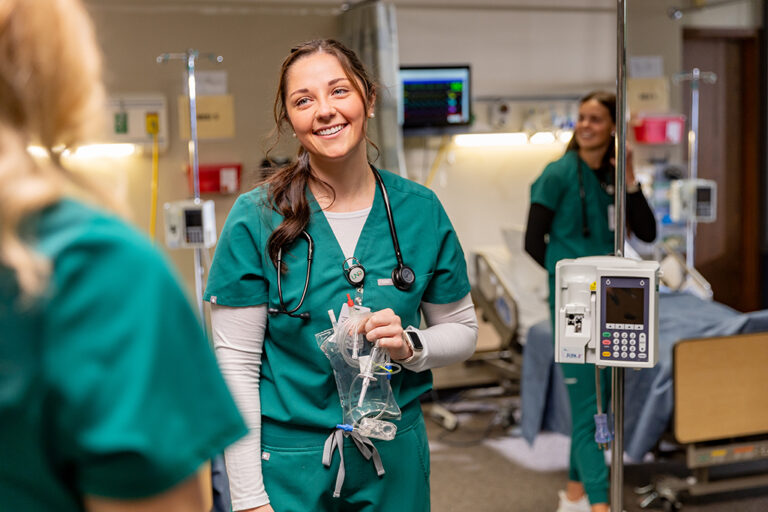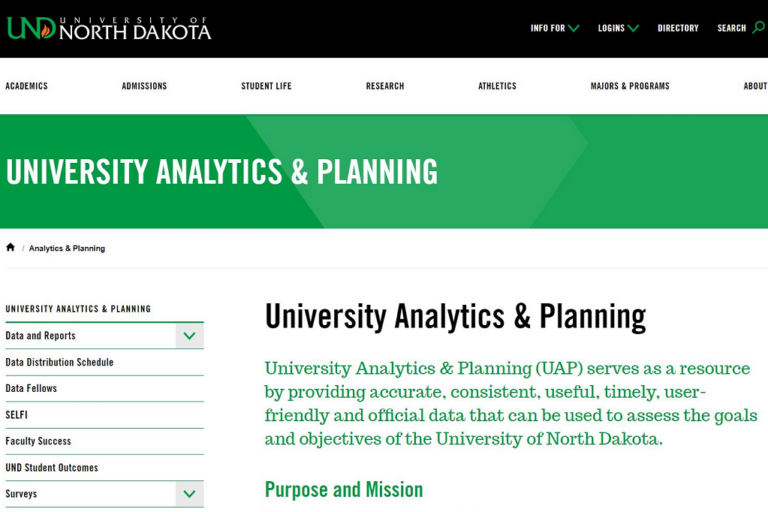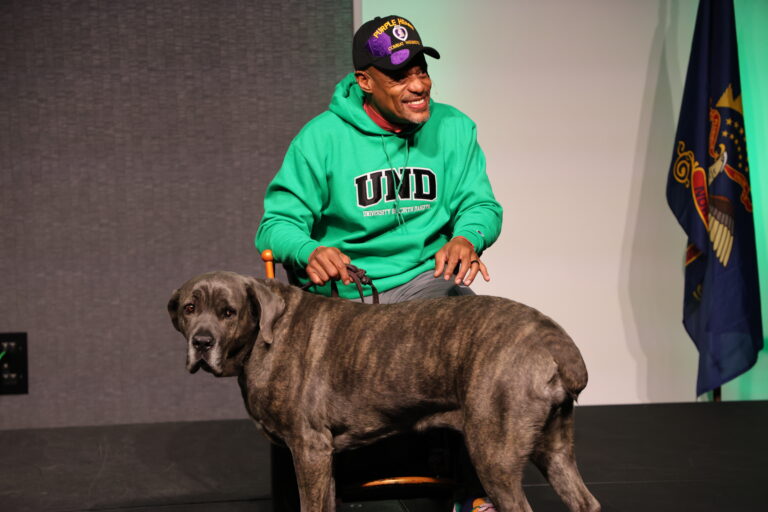Embracing change
VPFO: UND better positioned to adapt to new round of fiscal austerity thanks to strategic plan
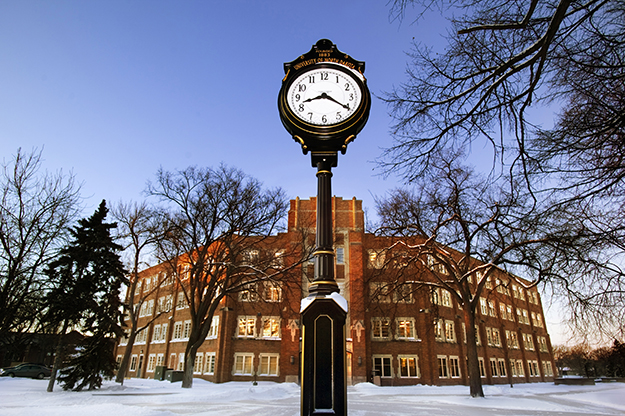
Editor’s note: President Mark Kennedy will discuss UND’s budget situation at the annual meeting of the University Council, 3 p.m., on Wednesday in Room 7 of the Education Building.
UND Vice President for Finance and Operations Alice Brekke admits she’s a glass-half-full person when it comes to most things.
That’s still the case after North Dakota Gov. Doug Burgum recently released sobering news in his budget guidelines for the next biennium. He called for even more cuts across the North Dakota University System on the heels of $100 million in base funding reductions for higher education in the current biennium.

The governor’s 2019-2021 budget guidelines were released in a public address on April 17. Burgum explained they are needed because general fund expenditures exceed projected revenues and because the state depleted reserves to balance its current budget. It could mean about $24 million less funding over two years for UND and the School of Medicine and Health Sciences.
Still, Brekke, a veteran of many past state budget cycles, sees in the governor’s preliminary guidelines glimpses of silver around what many would interpret as gray storm clouds on the horizon.
Foremost, she stressed that a great deal of the conversation will occur between now and the spring of 2019, when final budget decisions are made.
“This is just the first step in what is a months-long process, and that process has many layers to it,” said Brekke about the governor’s early outlook.
Council address
As for the guidelines, Brekke said she noticed several strategies laid out by the governor that are echoed in UND’s newly implemented One UND” Strategic Plan — a clear sign the University already is aligning itself with the strategic direction of the state.
Burgum’s calls to replace outdated practices with innovative approaches, more collaboration and rigorous self-examinations of every program and expenditure have become more routine on campus in UND’s new strategic culture.
“We are in a fortunate place, right now, in that we have a strategic plan that really gives us the opportunity to think hard about our priorities and our strategic direction,” Brekke said.
On Wednesday, President Mark Kennedy plans to expand on UND’s unique revenue positioning within the University System as well as other important decisions that will have an impact on the University, during the annual meeting of the University Council, set for 3 p.m., in Room 7 of the Education Building.
“We will be working hard to make the case that not only are we aligned with state priorities but that we are being efficient in delivering a quality product,” Kennedy said.
Reinforcing visit
And if Burgum’s visit to UND early last month is any indication, UND also is doing quite nicely adapting to the “leaner, stronger and more innovative” guidelines coming out of Bismarck.
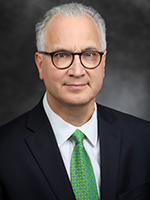
While at UND, Burgum and his team raved about UND’s effort to expand online education on campus through a partnership with Pearson Online Program Management, a setup that could bolster enrollment on and off campus and establish new revenues streams for the University.
Burgum also liked how UND is working collaboratively with the City of Grand Forks to revamp University Avenue as a new and vibrant “Main Street” between campus and downtown Grand Forks. The project falls in line with Burgum’s “Main Street Initiative.” The governor was especially impressed how UND and Grand Forks leaders included students in development of the project.
At another stop, Burgum was briefed on efforts under way at UND to address so-called “Grand Challenges” in the state and nation. UND plans to tie its state funding requests to these Grand Challenges that address UAS cybersecurity, big data collection, energy development, addiction prevention and more. The proposals are expected to result in positive returns by leveraging dollars or attracting more money from industry and the federal government.
“The governor seemed very impressed with our proposals to jump start significant increases in research in each of our Grand Challenges with an initial state investment,” Kennedy said. “I remain hopeful that, in addition to whatever base funding level results, the state will seriously consider additional investments in emerging technologies that can diversify the state’s economy.”
Growth opportunities
Despite the overall austerity of the governor’s preliminary guidelines, Burgum did say that re-investment in state priorities would be something he’d consider. He said new requests for capital projects also would be considered in the next budgeting process – positive developments for UND.
Pending approval by the State Board of Higher Education, UND plans to make three capital requests during the next legislative session: (1) the remodeling and restoration of Merrifield Hall, (2) the creation of a new science and technology center, or STEM Center, (3) and a major investment in other academic and technological infrastructure upgrades. Merrifield renovation and new STEM Center, alone, would go a long way in reducing UND’s deferred maintenance expenses, which had been projected during the last legislative session to reach $500 million.
Here’s what to expect:
- August, UND will use information from the governor’s guidelines as well as input from the State Board of Higher Education (SBHE) to craft and submit a “biennial budget” to the North Dakota Office of Management and Budget (OMB).
- In the fall, UND will be afforded time to meet with OMB analysts to answer questions and provide additional clarity.
- First week of December is UND’s first crack at seeing how the governor’s guidelines evolved into his official Executive Budget. This will be released during the 2019-2021 Legislature’s organizational session.
- Mid to late January 2019 is UND’s first legislative budget hearing. This time it will be before House Appropriations Committee.
- February 22 is crossover, in which bills are transferred between houses. The State Senate then will have its turn to deal with UND matters.
- April 26, is the last day of the 2019-2021 legislative session.
- May-June, once the Legislature makes final decisions, the SBHE will weigh in with final guidance on future spending plans for campuses.
Adapt and overcome
Brekke explained that UND already has done a great deal of work to prepare for, and even embrace, leaner budgeting principles through implementation of a University-wide strategic plan that works. That plan; along with more analytical firepower coming out of colleges and services units, as well as the adoption of an incentive-based resource allocation budget model (MIRA); has allowed UND leaders to connect decisions to results like never before.
UND now can be proactive, flexible and more nimble through the reallocation and redeployment of resources to higher priorities, based on the strategic plan. These are the kinds of things that should be happening whether UND is in a budget squeeze or not, Brekke says.
At last week’s SBHE meeting, staff representatives talked about how difficult it was to hear the governor’s guidelines and its impact on employee morale.
Brekke heard those words and said it’s important to acknowledge such feelings, but at the same time, leaders need to help their communities adapt and embrace change.
“I don’t think we can pretend we are in a place that is different than where we are now,” she said.
